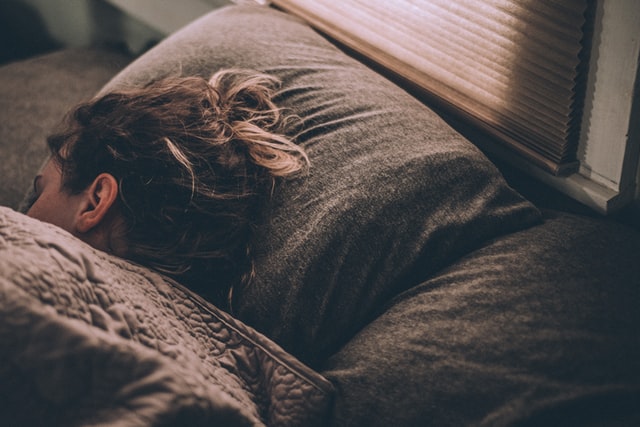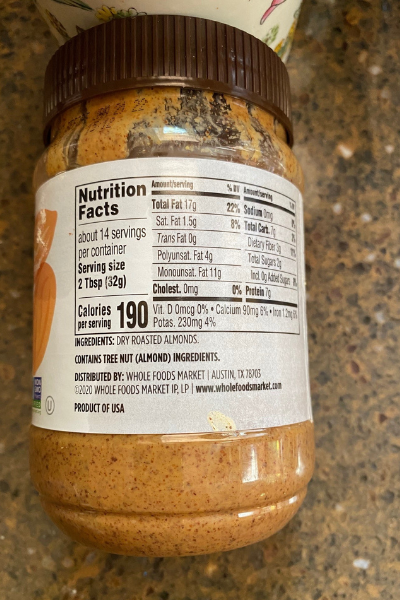It's All About the Stress
Yes, it is true that external stressors are many times out of our control; however, there are three stressors that we can control. We can control how much and the quality of sleep we get and we can control what we put in and on our bodies.
So let’s start with sleep. Most studies about sleep sug gest that sleep improves your immunity, stabilizes weight, lowers risk for serious health conditions like heart disease and diabetes, reduces stress, improves your mood, and improves performance at work and at home.
gest that sleep improves your immunity, stabilizes weight, lowers risk for serious health conditions like heart disease and diabetes, reduces stress, improves your mood, and improves performance at work and at home.
I’m sure we’ll all agree that when we sleep well we are just much happier people. You’re probably thinking, well how do I exactly control our sleep.
Experts suggest the following tips for quality sleep. Any steps you use that can improve your sleep quality will also help you with all of your health goals. Keep in mind that I am not “shoulding” on you to do all of these things right away or all in the same day. In addition, some might not fit into your lifestyle. Aim for adopting several. There are quite a few suggestions. Keep in mind that it’s a process.
- Practice the regular rhythms of sleep-go to bed and wake up at the same time each day.
- Do not press snooze. Once you are startled out of your sleep cycle by an alarm you won’t be able to get into another cycle simply by snoozing for 9 minutes. It can actually make you more tired.
- No TV in the bedroom. I know many of you are gasping right now. Studies suggest that watching TV before bed can actually disrupt your sleep cycles. Removing the TV from your bedroom results in more sleep and better sleep. I can attest to this. A year ago my husband and I moved into a fixer-upper with less than 900 sq feet. We remodeled the kitchen and are currently working on our master bedroom, so our bedroom is in our living room.
 Create an aesthetic environment in your bedroom that encourages sleep by using serene and restful colors and eliminating clutter and distraction.
Create an aesthetic environment in your bedroom that encourages sleep by using serene and restful colors and eliminating clutter and distraction.- Create total darkness and quiet-considering using eyeshades and earplugs. The glow of an alarm clock and/or your phone alerts can wake you up.
- Avoid caffeine or reduce it after noon-it may make sleep worse
- Avoid alcohol-it helps you get to sleep but makes your sleep interrupted and of poor quality.
- Get regular exposure to daylight for at least 20 minutes daily. The light from the sun enters your eyes and triggers your brain to release specific chemicals and hormones like melatonin that are vital to healthy sleep, mood and aging.
- Eat no later than two hours before bed-eating a heavy meal prior to bed will lead to a bad night’s sleep and will impede the body’s overnight detoxification process. Yes, we do a detox at night!!! What amazing bodies we have.
- Write your worries down. During your Power Down Hour, write down the things that are causing you anxiety and make plans for what you might have to do the next day to reduce your worry. It will free up your mind and energy to move into deep and restful sleep. Wouldn’t restful sleep be fantastic?!!!!
- Take a hot salt or aromatherapy bath. Raising your body temperature before bed helps to induce sleep.
- A hot bath also relaxes your muscles and reduces tension physically and psychically. By adding ½ to 1 cup of Epsom sale and ½ to 1 cup of baking soda to your bath, you will gain benefits of magnesium absorbed through your skin and the alkaline-balancing effects of the baking soda, both of which help with sleep.
- Get a massage.
- Stretch before bed
- Have sex before bed
- Warm your middle with a hot water bottle, which raises your core temperature and helps triggers the proper chemistry for sleep.
- Avoid medications that interfere with sleep if at all possible.
- Take relaxing minerals such as magnesium and calcium.
- If you experience excessive daytime sleepiness, fatigue, snoring and have been seen to stop breathing in the middle of the night by your spouse or partner, then consider getting tested for a sleep disorder such as sleep apnea.
- Get a relaxing tape or CD to help you get to sleep.
 Like I mentioned, don’t try to tackle everything at once. It actually can be a fun process trying different things.
Like I mentioned, don’t try to tackle everything at once. It actually can be a fun process trying different things.
That being said, another stressor is caused by everything related to eating. I don’t think there is one human that has all the answers about when, where, why, what, and how to eat.. Today I want to suggest some tips that will make it less stressful regarding the what.
Studies suggest that preparation is key when you’re trying to reach your optimal health.
Helpful tips for shopping
Never shop on an empty stomach. Whenever you place yourself in a vulnerable position, your defenses weaken. When you first enter the supermarket, notice that baked goods and other tempting foods are often among the first items to meet your eye. The market’s strategy of temptation is designed to lower your resistance. On a full stomach, you’ll have the strength to withstand temptation.
It’s helpful to bring a list. If you have a list with you, your shopping trip will be more focused and efficient. Roaming aimlessly down the aisles allows you too much time to rationalize why you deserve that coconut custard pie at the frozen food section. You can’t eat what you don’t take home.
Reading labels is fundamental.
Ingredients are listed in order of quantity and percentage.
Look for the food product ingredients that may be objectionable like dairy, soy, corn, and gluten if these do not serve you. The way to figure out what serves you and what doesn’t is to start an elimination plan. This is a topic for another day. Basically, there is a process to eliminating one food group at a time and journaling how you feel when you are and are not eating a particular food group. If you’ve joined us for any other sessions, I’ve spoken about the 30 Days to Healthy Living Program which is an elimination type process.
 The first five ingredients make up the majority of foods.
The first five ingredients make up the majority of foods.
Focus on the serving size and make sure it’s reasonable for the plan you are on.
Consider the percentage of the daily value of nutrients. You want most of your micronutrients to come from foods outside a box. Micronutrients include vitamins and minerals. Vitamins are necessary for energy production, immune function, blood clotting, and other functions. Meanwhile, minerals play an important role in growth, bone health, fluid balance, and several other processes.
Try and stay with foods that are as close to the way they came into the world. Complex carbohydrates break down slower and lead to more balanced blood sugars. Examples of these foods are berries, bean,s and sweet potatoes. A colorful plate is a healthy plate.
Labels also try to tell us where and how our food was grown, raised, and caught. They’re not propaganda made to convince us to pay more for our food than we have to. If you look at the recommendations about choosing produce and livestock it makes sense when you do some research.
These are labels you might see while shopping in a store online or at a farmer’s market:
- Grass-fed-this implies that the animals spend their lives on pasture eating what nature intended; they are not treated with hormones or antibiotics.
- Organic-for animal meat and dairy to be labeled “organic” the animal must never have been given antibiotics, hormones, or genetically modified grasses.
- GMO-Free/Non-GMO/Non-GMO Project Certified is produced without the use of genetically modified organisms.
- Naturally, grown-reserved for food produced on small farms that abide by the USDA Certified Organic methods of growing and selling locally.
- No Hormones Administered/No Hormones/Hormone-Free refers to the fact that the USDA prohibits the use of hormones in the raising of hogs or poultry in the United States. Beef may have this label.
 Free-Range or Free-Roaming refers to birds raised in the manner that they are able to go outdoors in order to engage in natural behaviors. However, birds only have to be allowed 5 minutes of open-air access a day to meet USDA requirements.
Free-Range or Free-Roaming refers to birds raised in the manner that they are able to go outdoors in order to engage in natural behaviors. However, birds only have to be allowed 5 minutes of open-air access a day to meet USDA requirements.- Pasture-Fed/Pasture Raised indicates that animals were raised with humane treatment and have higher levels of micronutrients. For beef, labels must also read “organic”, and “grass-fed” to make sure the animals were not fed GMO grains, grasses, corn, or soy. This is especially important for people with allergies to pay attention too as well as those trying to avoid soy for hormonal reasons.
- Natural cannot contain any artificial flavorings, color ingredients, chemical preservatives, or artificial or synthetic ingredients.
- Minimally processed is a process that does not fundamentally alter the raw product.
- Antibiotic-free or raised without antibiotics refers to meat and poultry carrying these labels must not have had any antibiotics administered during the lifetime of the animal.
- Cage-free implies that hens laying eggs are uncaged inside barns or warehouses. It does not mean the hens have access to the outdoors, but that they do have the option to engage in many of their natural behaviors, such as walking, nesting, and spreading their wings.
- Certified Humane Raised and Handled indicates that animals raised for dairy, lamb, poultry, and beef products are treated in a humane manner and without the use of growth hormones or antibiotics.
- Farmed seafood or Fish farming involves raising fish commercially in tanks or other enclosures. Fish are either farmed or wild-caught.
- Wild-caught seafood applies to seafood caught in their natural habitats by fisheries.
- No Additives implies a product (or packaging) has not been enhanced with the addition of natural or artificial ingredients.
When it comes to meat, poultry, fish, and eggs the rule of thumb is cage-free for chicken and eggs,
Grass-fed for meat and wild-caught for fish. These terms imply that the animals are in their natural habitat free from the stress of overcrowding or unnatural foods. For example, some livestock that is not grass-fed may be fed some types of wheat grain. Wheat is harmful to people that have gluten intolerances and/or celiac disease. Educating yourself about the source of your food can be fun and interesting.
 Another thing that can cause stress to our bodies and maybe harmful is a lack of movement. The best way to deal with this by using a movement menu and finding something that you love to do.
Another thing that can cause stress to our bodies and maybe harmful is a lack of movement. The best way to deal with this by using a movement menu and finding something that you love to do.
Any of the following are considered movement and count as an activity even if it’s not in a gym setting. The key is getting your body in a state of motion. The following constitute movement:
biking, roller skating, rollerblading, jumping on a trampoline, dance, jump rope, hula hooping, yoga, chopping wood, cartwheels, Zumba, hiking, kayaking, rock climbing, stretching, Kinrgy, fencing, golfing, archery, trex, cardio barre, acrobatics, walking, running, swimming, vacuuming, cleaning, walking stairs, tennis, basketball, soccer, etc.
What types of movement would you include on your list?
What movement did you love to do as a child? What movement would be fun to do with others? What is something you’ve never tried and you’ve always wanted to try?
The key to making everything that we’ve discussed here today work is to come up with a simple system that works best for you and follow it. The only way to do that is to play around with options and experiment. I guarantee your body will love you for it.
You will reduce the stressors that you have control over by getting better sleep, eating nutrient-rich and cleaner foods, and moving.
For more tips or ideas please reach out to me at lambertandlambertcoaching.com or email me at [email protected].
Don’t put yourself on the back burner. Take charge of your life today.






